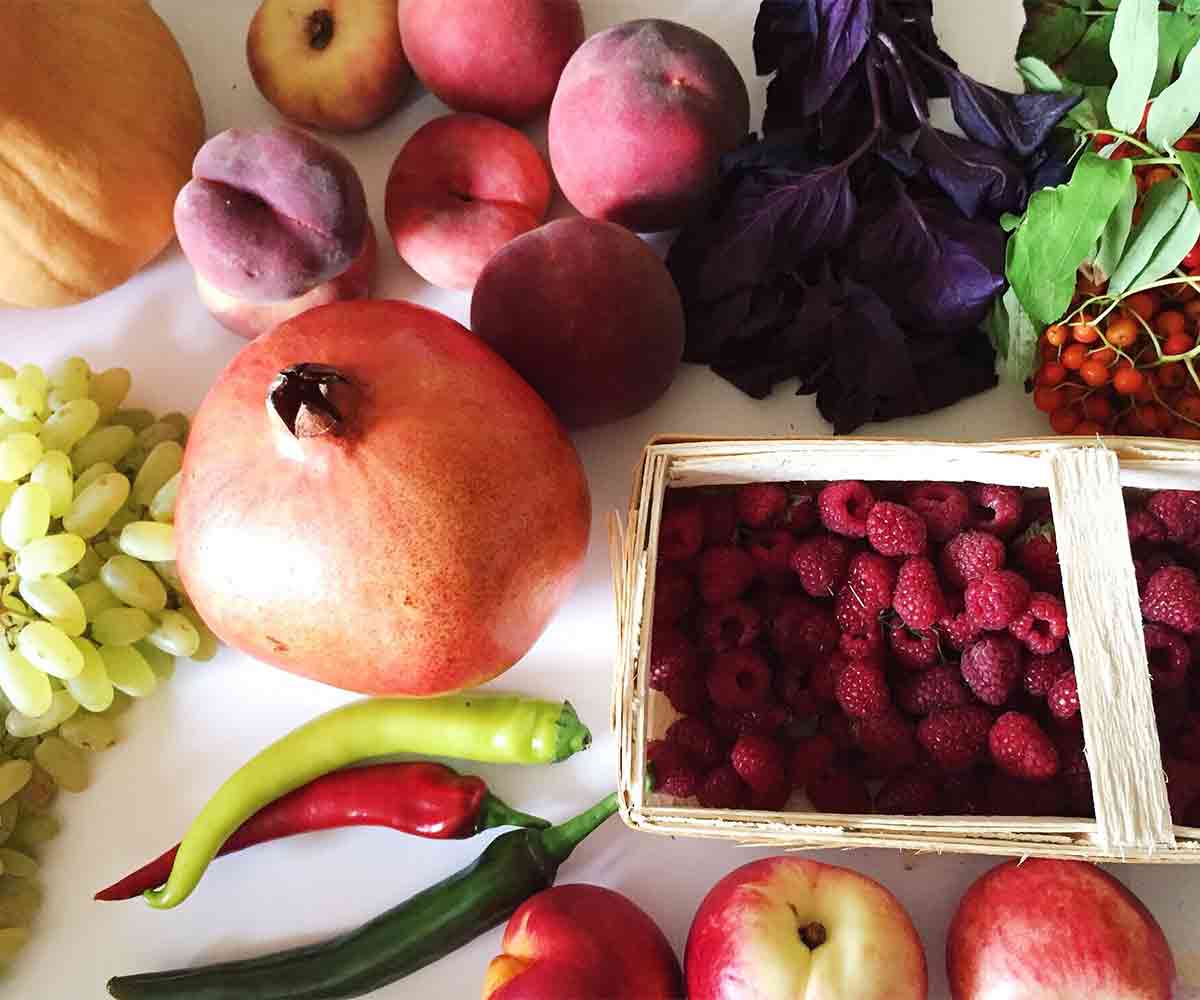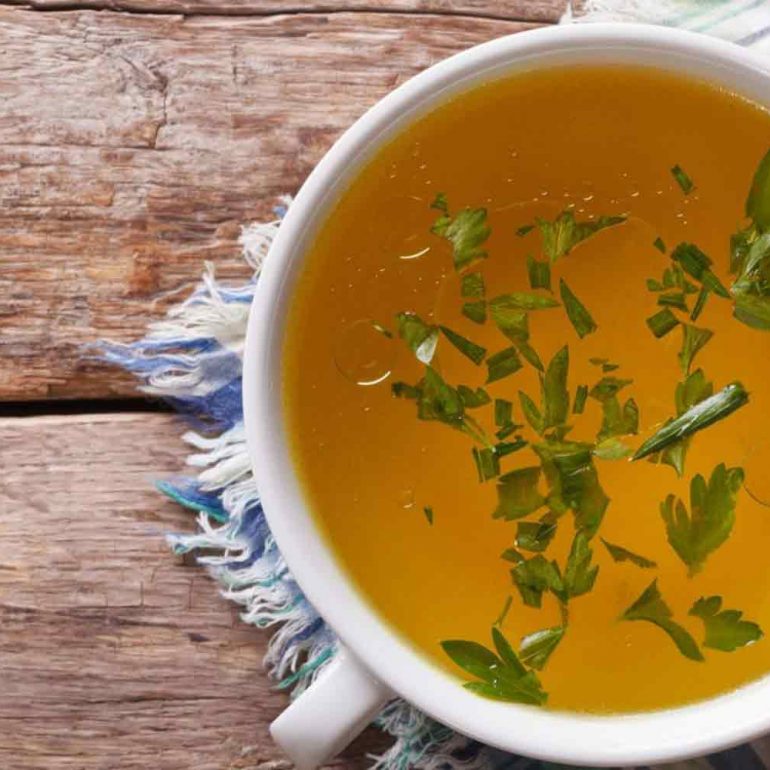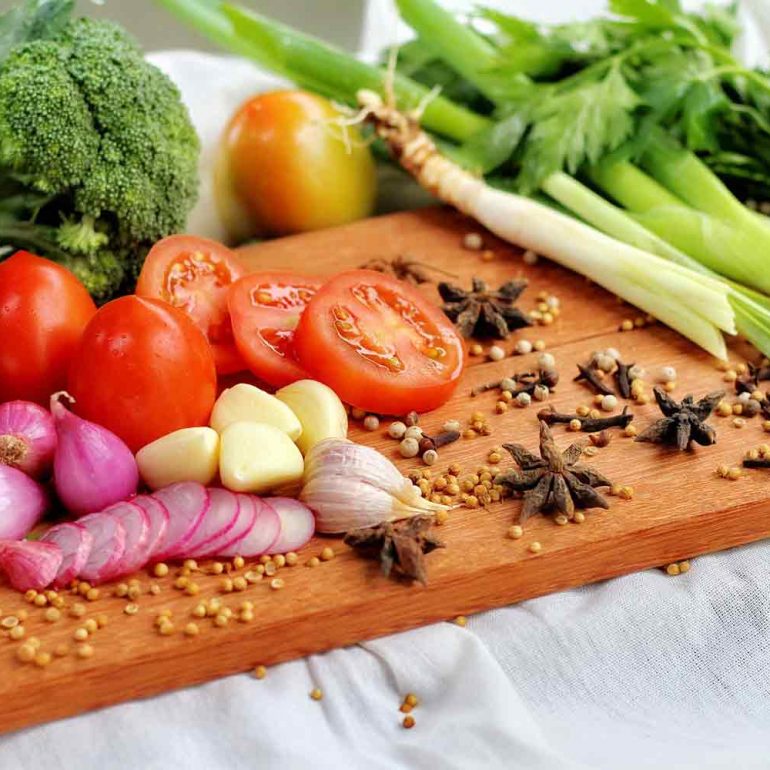Seasonal cycles, shifts in the weather, and even the move from night to day are not external artifacts. The environment is in constant flux, and we are in flux with it. In the animal kingdom, this shows in cycles of fertility, migration, and many aspects of behavior. These shifts in the environment have influenced human activities, physical and cultural, for millions of years. Our bodies still dance to the rhythm of natural change. Macrobiotics is built around the simple insight that learning to cooperate with natural cycles is productive for health. It is a plant-based diet with non-perishable foods, such as whole grains and beans at the foundation, that is the hope for the future. Macrobiotic nutrition advocates regional and seasonal eating to reduce food waste and to lower the environmental effect of food transportation, both serious issues in the discussion of food choices.
Food Mileage
The world of international food distribution is topsy-turvy, costly and wasteful – but profitable. Cod, caught off Norway, is filleted in China, then shipped back to Norway for sale. Argentine lemons fill supermarket shelves on the Citrus Coast of Spain, while local lemons rot on the ground.[1] International trade agreements mean that fuel for international sea and air freight is not taxed. Cheap slave labor in Africa provides greenhouse salad and vegetables to Europe, at a far lower cost than local produce.
As competition for food becomes more relevant, so does the issue of local and regional food security. Cheap labor in poor countries not only entails shockingly high ‘food miles’, but undermines local, sustainable agriculture. The cheap labor pay-out, rather than providing security to the host nations, makes them even more dependent on single export crops. This is Corporate Colonialism.
According to the consumer group Sustainable America, the average food miles for watermelon is 1,886; they travel from Mexico. Kiwi fruit is at 5,015, coming from Chile, and pears from Argentina clock in 5,160 miles. Groups like Sustainable America have advocated labeling to tell consumers how far a product traveled to reach its final destination. Perishable fruits and vegetables arrive out of the natural season, and their nutrient levels start to diminish as soon as they are harvested. The industry constantly resists moves to require the seller to provide air miles and environmental footprint information.
Seasonal Diets
Fruits and vegetables continue to ‘breathe’ after they are picked. This process, called respiration, breaks down carbohydrates, proteins, and fats, and leads to loss of food value, flavor, and nutrients. Dry or warm conditions can accelerate nutrient loss. Vegetables such as asparagus, broccoli, mushrooms, peas, and sweet corn have a very high respiration rate and will lose nutrition and flavor more quickly than apples, garlic or onions, all of which have low respiration rates.
The longer the period of respiration before consumption, the more nutrient loss there will be.[2],[3] Eating a seasonal diet certainly makes economic and environmental sense, but there are other nutritional reasons we might want to eat with the seasons.[4] The body has some secrets we aren’t usually aware of.
The environment can profoundly influence changes in human gene expression.
Our genes shift quite dramatically with seasonal changes. These shifts affect up to 25% of the genetic code that influences our physical behaviour, especially the immune system and the inflammatory response. It shows how much our body strives to create a balance with natural processes.
The changes in gene expression allow us to adapt better to changes in temperature or other seasonal challenges [5], [6],[7]. We know that seasonal eating helps cut down on wasteful food transport and supports local agriculture, but it could also have a direct effect on our health. If the body adapts to the season, then the foods traditionally eaten at that time of year may well be of assistance in creating harmony with that change. Homo Sapiens have walked the earth for about 200,000 years – that means that 10,000 generations of human life have experienced the change of seasons, that cycle is built into us.
Environment and lifestyle influence many complex diseases. Cardiovascular[8], autoimmune, infectious disease[9], and psychiatric illnesses all have seasonal patterns.[10]. [11],[12] Scientists are now investigating how our particular environment may be ‘seeding’ our gut biome.[13]
Seasonal eating has been a hallmark of the macrobiotic dietary practice.
The foods that are seasonally most plentiful have specific benefits to our body’s seasonal needs. They help bring us into harmony with the environment, a harmony our body still craves after centuries of experience.
Generally, we find that foods harvested in the autumn are less perishable and can be safely stored during the winter. They hold their nutritional value during the time of year when there is less seasonal growth. They are warming foods; some are known as thermogenic because they initiate a biochemical reaction that produces heat. Some other foods (such as animal source protein) also warm the body, but the effect is more short-lived[14]. The increase in caloric energy from vegetable carbohydrate is not dramatically rapid, but the result lasts longer. Beans, grains and root vegetables are excellent thermogenic foods for cold weather. Food combinations and cooking can either increase or decrease thermogenic qualities.[15] For centuries, both western and eastern cultures have recognized several spices (particularly ginger) and carbohydrate-dense foods as warming, although experiments generally focus on using thermogenic foods in weight loss.
We harvest cereal grains and beans in autumn and use them more regularly in colder months (although they can be used year-round). Slower growing root vegetables, such as carrots, onions, parsnips, and sweet potatoes, also release energy slowly. My grandmother served porridge in winter; she said it would warm me all day because “it sticks to your ribs.” In hot weather, we naturally choose cooling foods, such as the first greens and early fruits. Foods with higher water content like melons, celery, radishes, cucumber, lettuce, and other salad greens are relaxing and hydrating, and are more valuable in hot weather.
The modern diet constantly undermines the innate intelligence of the body.
I was in Helsinki many years ago, and the temperature was below zero. Near my hotel was a supermarket, always a good place to discover what people really eat. Just inside the doors was a huge pyramid of pineapples with a plastic palm tree. A sign on the palm tree said ‘The tropics come to Helsinki’. Sadly, the tropics were not in Helsinki: no matter how fertile your imagination or how efficient your heating system, nature was in deep winter.
When we eat excessively warming foods (fatty foods, protein) in summer, we crave extreme and immediate cooling. Our body suffers the consequences, struggling to adjust to our indiscriminate choices. Foods like ice cream and ice cold drinks become the norm. Moving back into harmony with nature is a practical process; cooperation with the natural order makes sense. It’s how our bodies are made.
A study in Japan discovered significant differences between the vitamin content of summer-harvested and winter-harvested spinach.[16] More sun exposure means more antioxidants in the plant. This makes sense: antioxidants protect the plant from oxidative damage that the sun can cause. Drought and pathogens also change antioxidant levels.[17] In Chinese medicine, the changes in the vegetal growth provided a specific balance for the macro-effects of the season. The season produces the foods that perfectly balance our needs.
Choosing local, seasonal foods builds a link between us and the environment and integrates us into our world. The two golden rules are: eat as close to home as possible and try and eat seasonal foods. This quote, attributed to Japanese naturalist and philosopher, Kaibara Ekken[18], “Soil and man are not separate,” sums up the macro-effect of eating within the local environment.
References:
[1] Environmental Cost of Shipping Groceries Around the World, Elisabeth Rosenthal, New York Times, April 26, 2008
[2] Shah NS, Nath N. Minimally processed fruits and vegetables – Freshness with convenience. J Food Sci Tech. 2006; 43 (6): 561–570.
[3] Goldman IL, Kader AA, Heintz C. Influence of production, handling, and storage on phytonutrient content of food. Nutr Rev. 1999; S46–S52.
[5] Widespread Seasonal Gene Expression Reveals Annual Differences In Human Immunity And Physiology, Simone De Jong, Marjolein Neeleman, Jurjen J Luykx, et al – Nature Communications, Article 7000, May 2015
[6] Seasonal Changes In Gene Expression Represent Cell-Type Composition In Whole Blood, Simone De Jong, Marjolein Neeleman, Jurjen J Luykx, Aaarten J. Ten Berg, et al. – Oxford Journal, Human Molecular Genetics, Dec. 2013
[7] Widespread Seasonal Gene Expression Reveals Annual Differences In Human Immunity And Physiology – Xaquin Castro Dopico, Marina Evangelou, Ricardo C. Ferreira, Hui Guo, Marcin L. Pekalski, Deborah J. Smyth, Nicholas Cooper, Oliver S. Burren, Anthony J. Fulford, Branwen J. Hennig, Andrew M. Prentice, Anette-G. Ziegler, Ezio Bonifacio, Chris Wallace & John A. Todd – Nature Communications 6, Published 12 May 2015
[8] Pell, J. P. & Cobbe, S. M. Seasonal variations in coronary heart disease. QJM 92, 689–696 (1999).
[9] Iikuni, N. et al. What’s in season for rheumatoid arthritis patients? Seasonal fluctuations in disease activity. Rheumatology 46, 846–848 (2007)
[10] Fisman, D. N. Seasonality of infectious diseases. Annu. Rev. Public Health 28, 127–143 (2007).
[11] Rosenthal, N. E. et al. Seasonal affective disorder. A description of the syndrome and preliminary findings with light therapy. Arch. Gen. Psychiatry 41, 72–80 (1984).
[12] Owens, N. & McGorry, P. D. Seasonality of symptom onset in first-episode schizophrenia. Psychol. Med. 33, 163–167 (2003).
[13] Among Trillions of Microbes in the Gut, a Few Are Special, Scientific American, July 2015
[14] Mikkelsen, PB et al. “Effect of fat-reduced diets on 24-h energy expenditure: comparisons between animal protein, vegetable protein, and carbohydrate” American Journal of Clinical Nutrition. 2007
[15] See more information in the recipe and cooking section of the MACRVegan pages.
[16] Igarashi O. The Significance of the Issuance of the 5th Revision of the Japanese Standard Tables of Food Components on Study and Research on Vitamins and Diseases. 36th Vitamin Information Center Press Seminar. Tokyo, Japan. 2001.
[17] Magkos F, Arvaniti F, Zampelas A. Organic food: Nutrititious food or food for thought? A review of the evidence. Int J Food Sci Nutr. 2003 Sep;54(5):357-71. Review.
[18] Kaibara Ekken 1630 –1714) or Ekiken, also known as Atsunobu. Japanese Neo-Confucianist philosopher and botanist.
Since 1967, Californian, Bill Tara has been an active advocate for natural heath care. He was the Vice President of Erewhon Trading Company, one of America’s first national distributors of organic foods, and was a co-founder of Sunwheel Natural Foods in London, England. He has been a health counsellor, teacher, author, entrepreneur and creator of health education centres in Europe and North America.




